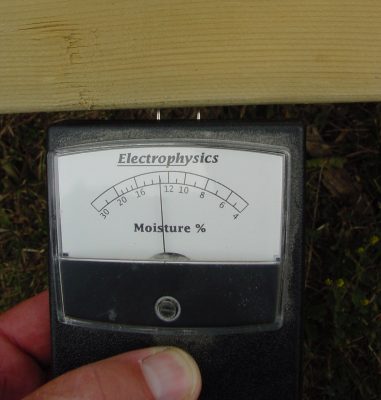VIDEO: Face Frames 101
TECH TIP: Choosing Lumber for Face Frames
Standard, ready-milled 3/4”-thick lumber is fine for all the solid wood parts of these kitchen cabinets, including face frames. That said, if you’ve got a planer and access to rough lumber, mill it down a little thicker. A 13/16” thickness is a little nicer to work with for cabinets than 3/4” (or what passes for 3/4” these days, which is closer to 11/16”). The main thing to understand is that nothing fancy is required for face frame wood unless you want it to be fancy. Even relatively low-grade lumber with knots, wavy grain, pitch pockets and other defects can be significantly upgraded if you cut parts from this lumber carefully. Cross cut around defects, toss the knots, cracks and wavy grain, then save the longest sections of each board for the longer stiles and rails you’ll need. You can easily raise #2 grade boards to clear or nearly clear with careful cutting. Whatever you do, make the wood of the stiles and rails as clear as possible. You’ll get better face frame joints that way, and it’ll be easier to install hinges.
TECH TIP: Is That Wood Really Dry?
 It’s easy to think your face frame wood is dry when it’s not. In climates with a heating season, wood for face frames needs to have a 7% to 9% moisture content. Any wetter than this and your face frame will shrink, crack and warp on the cabinet in time. And trust me, that’s extremely disappointing. Trouble is, wood won’t get down to the required 7% to 9% on its own. Even lumber that’s stored under cover for decades won’t get much drier than 12% to 16% in most regions of North America. Even kiln-dried lumber that started out dry enough to use safely indoors will soak up moisture in a few weeks of unheated storage during damp weather. So, what should you do?
It’s easy to think your face frame wood is dry when it’s not. In climates with a heating season, wood for face frames needs to have a 7% to 9% moisture content. Any wetter than this and your face frame will shrink, crack and warp on the cabinet in time. And trust me, that’s extremely disappointing. Trouble is, wood won’t get down to the required 7% to 9% on its own. Even lumber that’s stored under cover for decades won’t get much drier than 12% to 16% in most regions of North America. Even kiln-dried lumber that started out dry enough to use safely indoors will soak up moisture in a few weeks of unheated storage during damp weather. So, what should you do?
As you work on your stiles and rails, work in stages. Don’t cut them down to final width and immediately install the pieces. You want to leave room for wood to do all its misbehaving while it’s still wider than needed and uninstalled. That’s why you must joint and trim each part only after the wood has fully stabilized. How do you know when this has happened?
A moisture meter isn’t absolutely essential for taking guesswork out of the wood/moisture equation, but it sure does help. All models work on the same principle. The tool induces a small electric current through the wood and measures electrical resistance. The lower the resistance, the higher the moisture content. Percentage figures are shown with an analog needle or digital readout. Be sure to measure freshly cut surfaces to get an accurate reading of internal moisture content. As you see how fast wood dries during construction, you’ll develop a sense of how long it takes wood to get dry enough, and you’ll need the meter less and less often. The good news is that even wood that’s 12% to 16% moisture can dry down to 7% in two or three weeks in a space that’s 70ºF to 75ºF and 50% to 60% relative humidity. Use a household fan to blow air on the wood and drying may happen even faster. Watch the video up next to see a moisture meter in action. They’re cheap insurance for anyone working with solid wood, whether it be fine woodworking or home improvements.
VIDEO: Moisture Meter in Action
Your job now is to rip cut enough face frame material for all your cabinets, making the rough pieces 1/4” to 1/2” wider than the finished size required. This leaves enough wood for jointing one edge before final ripping to finished width. But before you rip anything, crosscut your lumber to the approximate lengths you’ll need for the various face frame members. Why crosscut now rather than later? It’s a lot easier and safer to rip cut and joint edges accurately on shorter lumber than longer. No need to get fancy, just crosscut a few inches longer for all the major types of face frame pieces you’ll need. This means the lower cabinet stiles, lower cabinet rails, upper cabinet stiles and upper cabinet rails. Final crosscutting to length will happen in two different ways later on. For now, just rough cut what you need, plus a few extra stiles and rails in case you make mistakes later. Maybe a little bit more than a few if you’re prone to cutting mistakes.
Careful crosscutting can greatly improve the quality of wood that makes it to your finished cabinets. It all comes down to planning and cutting out defects and poor grain as you work and as part sizes allow. Watch the video up next to learn how to crosscut for quality and up your game accordingly.